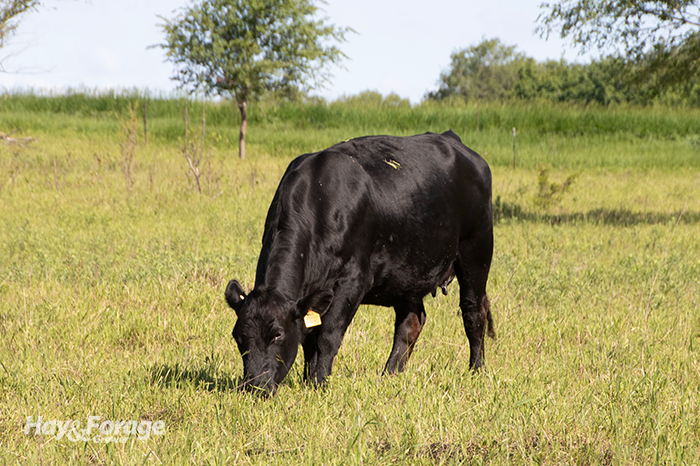Don’t jump the grazing gun |
| By Amber Friedrichsen, Managing Editor |
|
|
 Managing the spring flush of forage growth often involves flirting with the fine line between grazing too early and being swallowed by the surplus. As cool-season grasses start to green up, it may be tempting to turn cattle out on pasture as soon as possible, but green doesn’t always mean “go.” Victor Shelton, a retired Natural Resources Conservation Service (NRCS) agronomist and grazing specialist, warns farmers about cool-season grass growth that appears to be extra green. He says a brighter shade of grass isn’t necessarily a good sign. Moreover, it doesn’t indicate that forage is ready to graze. Shelton explains these “greener” plants may actually have depleted energy reserves and weakened root systems, especially if forage was overgrazed and/or experienced drought stress last fall. “In many cases, this signals that the plants are struggling to survive, pushing out new growth as a last-ditch effort to recover. If this is the case, these pastures urgently need recovery time,” he writes in an Ohio State University Extension article. “While closely grazed pastures may green up faster in the spring, this is often a sign of stress rather than healthy regrowth.” Leaves are key Overgrazing strips plants of the leafy solar panels they need to harvest light energy for photosynthesis. When this occurs at the end of a grazing season, forage cannot store enough of the root carbohydrates that are required to overwinter and kickstart regrowth the subsequent spring. Overgrazing can also have long-term effects. “Without sufficient leaf material to conduct photosynthesis, plants are unable to produce the energy necessary to not only survive but to strengthen their roots, which is critical for long-term resilience,” Shelton says. “With diminished reserves, plants are also less resilient to environmental stresses like drought or extreme temperatures, which further slows recovery.” To avoid this, Shelton recommends waiting until cool-season grasses are at least 8 to 10 inches tall before turning livestock out on pasture. Then, aim to leave 3 to 4 inches of grass stubble after each grazing event, or better yet, abide by the “take half, leave half” rule of thumb. The overall goal is to equip forage with the leaf resources it needs to facilitate a faster and more robust recovery; however, moving livestock this quickly through the spring flush may warrant a more touch-and-go approach to grazing management. “I’d much rather take less and keep animals moving to the next allocation than have forages get too far ahead of the livestock,” Shelton states. “Once those fields that were grazed first are ready to graze again, stop where you are at in the rotation and start over. The remaining can be stockpiled for later use,” he suggests. Soil impacts Leaving adequate residual can also improve soil health. “Leftover stubble protects against soil compaction, allowing better water infiltration, which benefits plant health and ensures a more consistent forage production system,” Shelton says. Soil texture also plays a role in the rate of pasture recovery. For instance, sandy soils may need more frequent and longer rest periods postgrazing, whereas heavier-textured soils may pose challenges with water infiltration and compaction. “Grazing management is often like a chess game; strategic moves are needed to balance grazing length, the amount of forage removed, and recovery time, with each decision impacting overall forage production and sustainability throughout the season,” Shelton writes. “It’s not about maximizing a single grazing event but optimizing the entire grazing season.” |
